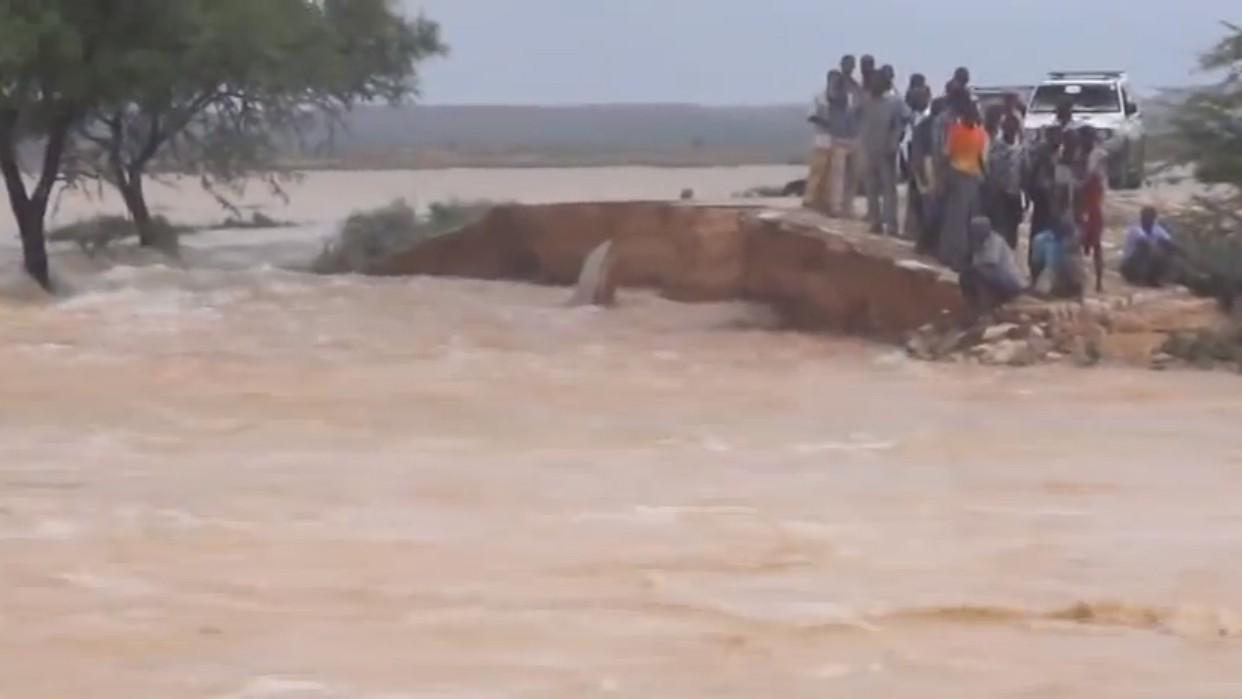Response to devastating cyclone in Somalia

In November 2013 a devastating cyclone hit the Somali region. It lashed the area with strong winds and 36 hours of torrential rain. Its effects were widespread and extremely destructive; nearly 300 people lost their lives, infrastructure was destroyed, including 3,000 homes, and as much as 89 percent of the livestock in the region perished. Livestock is fundamental to the traditional lifestyle of the nomadic population. Their animals give them income to send their children to school, food for survival, even social status. Therefore, the loss of animals in nomadic communities deeply affects their ability to maintain their livelihoods.
The need to document the disaster
Many of the areas affected by the cyclone are remote to begin with, and damage to infrastructure made accessing these places even more difficult than usual. This also impeded the flow of reliable information on the extent of the damage, leading to rumors and uncertainty. The rumors varied dramatically, with some claiming huge loss of life and complete devastation, and others claiming minimal impact.
The Puntland Development Research Centre (PDRC) is one of Interpeace's local peacebuilding partners in the Somali region. PDRC has a mobile audio-visual unit which uses film to raise awareness about important issues affecting Puntland society, particularly in isolated and hard-to-reach areas of the region.
While PDRC is not a humanitarian organization, its ability to spread messages between remote and neglected areas and the wider world is unparalleled within Puntland. PDRC's mobile audio-visual unit visited the affected areas, with the aim of documenting and understanding the actual situation on the ground.
Giving the crisis a human face
Its outstanding ability to elicit and tell local stories in a sensitive and empathetic manner helped PDRC gain the trust of local people. In telling their stories, PDRC shone a light on the human toll taken by the cyclone and gave documentary evidence of the true situation on the ground.
Using its initial footage in an abbreviated version of the final film, PDRC tapped into its extensive networks in the media and government to disseminate this footage widely. In a broad-ranging lobbying effort, PDRC advocated for humanitarian assistance to the affected communities. The film was shown on local and international satellite TV, disseminated to NGOs and even given to the Puntland president. He in turn distributed the film to visiting government delegations.
Somali commitment to cyclone response
The response to the cyclone from the Somali community, both in the region and internationally, was overwhelming. People in Puntland and the Somali diaspora worldwide gave the majority of contributions to the relief effort. Despite the political and geographic divisions that remain, Somali society has shown an inspirational ability to pull together in a time of need.
Engagement beyond the initial relief efforts remains crucial. Changes in the ability of the population to live a traditional lifestyle could lead to future problems and insecurity within the region. PDRC's film and advocacy efforts have helped demonstrate the need for immediate humanitarian assistance, but just as important, they highlight the necessity for longer-term strategies to support nomadic populations.
See the final film documenting the cyclone's consequences and response:
